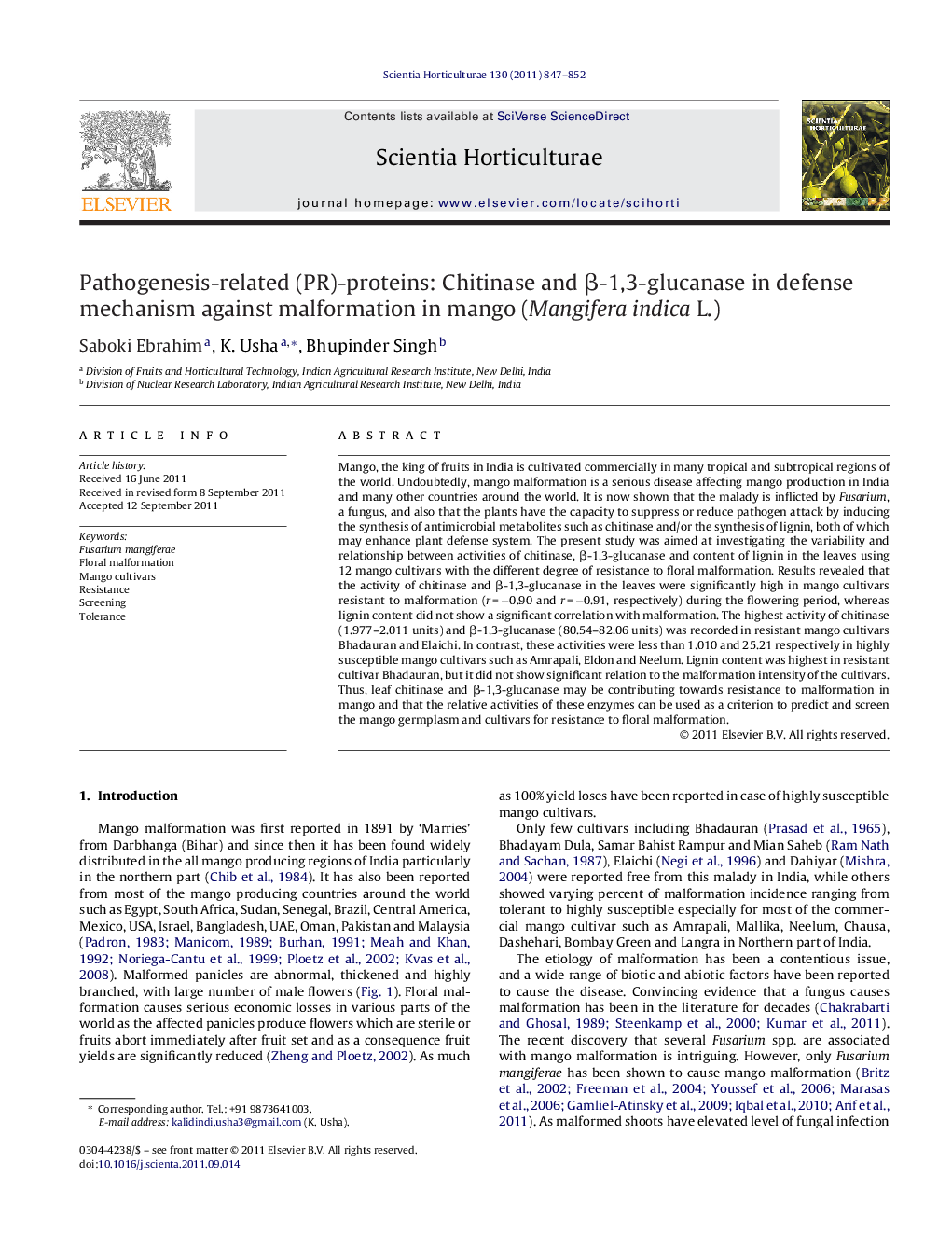| Article ID | Journal | Published Year | Pages | File Type |
|---|---|---|---|---|
| 4567896 | Scientia Horticulturae | 2011 | 6 Pages |
Mango, the king of fruits in India is cultivated commercially in many tropical and subtropical regions of the world. Undoubtedly, mango malformation is a serious disease affecting mango production in India and many other countries around the world. It is now shown that the malady is inflicted by Fusarium, a fungus, and also that the plants have the capacity to suppress or reduce pathogen attack by inducing the synthesis of antimicrobial metabolites such as chitinase and/or the synthesis of lignin, both of which may enhance plant defense system. The present study was aimed at investigating the variability and relationship between activities of chitinase, β-1,3-glucanase and content of lignin in the leaves using 12 mango cultivars with the different degree of resistance to floral malformation. Results revealed that the activity of chitinase and β-1,3-glucanase in the leaves were significantly high in mango cultivars resistant to malformation (r = −0.90 and r = −0.91, respectively) during the flowering period, whereas lignin content did not show a significant correlation with malformation. The highest activity of chitinase (1.977–2.011 units) and β-1,3-glucanase (80.54–82.06 units) was recorded in resistant mango cultivars Bhadauran and Elaichi. In contrast, these activities were less than 1.010 and 25.21 respectively in highly susceptible mango cultivars such as Amrapali, Eldon and Neelum. Lignin content was highest in resistant cultivar Bhadauran, but it did not show significant relation to the malformation intensity of the cultivars. Thus, leaf chitinase and β-1,3-glucanase may be contributing towards resistance to malformation in mango and that the relative activities of these enzymes can be used as a criterion to predict and screen the mango germplasm and cultivars for resistance to floral malformation.
► Chitinase and β-1,3-glucanase activities are negatively correlated with the intensity of mango malformation thus suggesting the role of the above PR-proteins in imparting tolerance to malformation. ► Screening of existing mango cultivars for higher activity of chitinase and β-1,3-glucanase, may lead us to identify and develop mango plant types that are less susceptible to malformation. ► The conventional breeding approach can be complemented with molecular breeding to introduce chitinase and β-1,3-glucanase genes in commercially promising mango types to lower malformation susceptibility. ► From this study it can be safely concluded that chitinase and β-1,3-glucanase are an important and reliable screening markers which should be exploited for developing malformation resistant or less susceptible mango cultivars.
